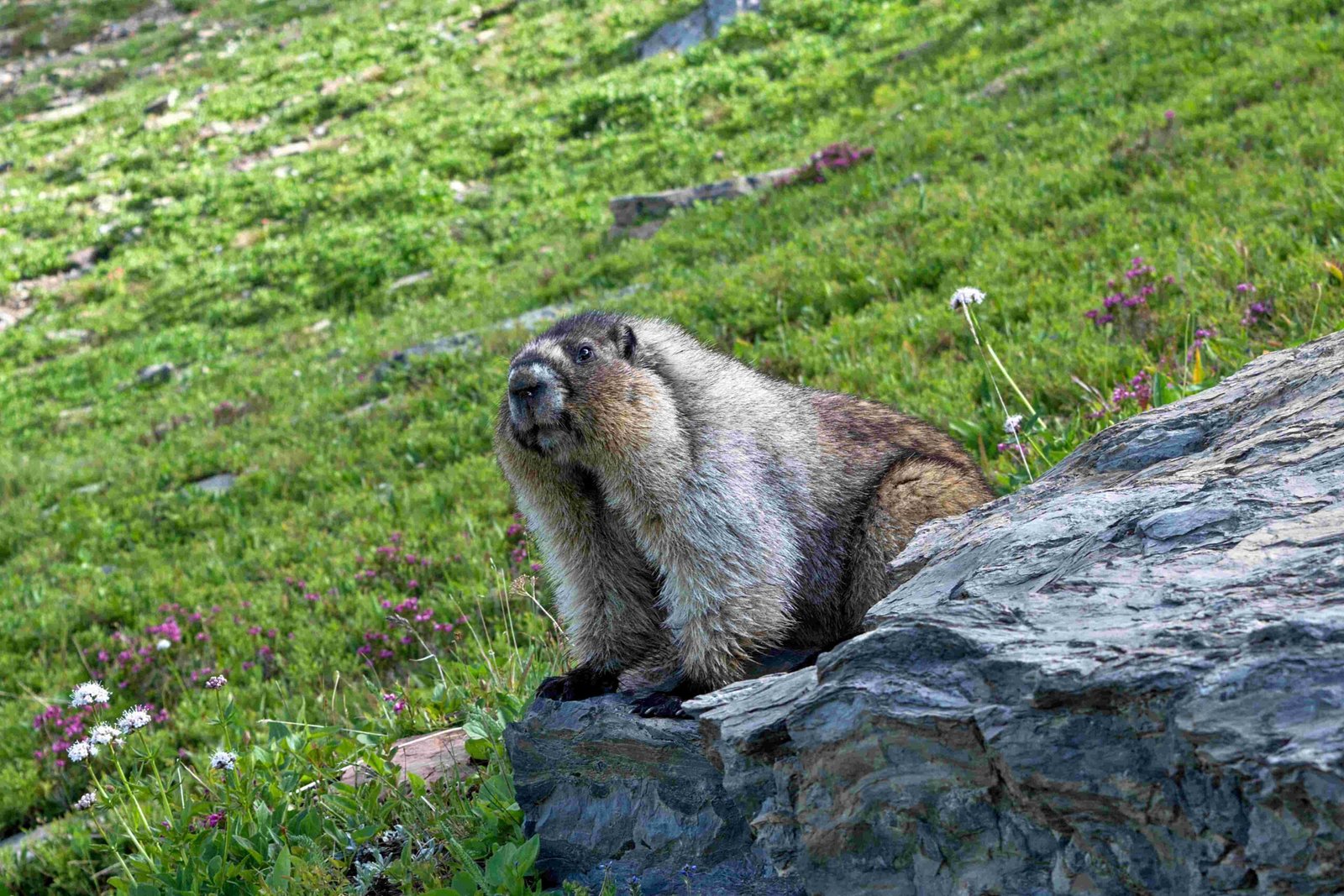Glacier National Park has inspired poets with its majestic landscapes, diverse ecosystems, and profound natural beauty. Poems about this iconic park often explore themes of grief, healing, death, rebirth, and the deep connection between humans and nature. Notable works include Prageeta Sharma’s ‘Glacier National Park and the Elegy’ and Maxine Kumin’s ‘In the Park’, which use the park’s scenery as a backdrop for emotional and philosophical reflections.
What Are the Primary Themes in Glacier National Park Poems?

Glacier National Park poems often revolve around several key themes:
- Grief and Healing
- Death and Rebirth
- Human Connection with Nature
- Environmental Conservation
Grief and Healing
Prageeta Sharma’s ‘Glacier National Park and the Elegy’ exemplifies this theme. The poem uses the park’s landscape as a backdrop for processing personal loss. For example:
I proposed then a drive to Glacier National / Park / thinking of a fine faultless finery—the firs, pines, and / stillness
This line illustrates how the natural beauty of the park serves as a balm for emotional pain.
Death and Rebirth
Maxine Kumin’s ‘In the Park’ explores the cyclical nature of life and death. While not exclusively about Glacier National Park, it uses the park’s imagery to discuss the transition between life states:
Between the grizzly’s
going under and coming out
again is a time that belongs
to neither world
Human Connection with Nature
Many poems emphasize the profound relationship between humans and the natural world. Sharma’s work vividly describes the landscape:
spring’s sustenance, / an earthwork / of forest trees scored in majestic columns, bedded / and wooded,… coated with needles, fully medicinal
This description underscores nature’s therapeutic and spiritual significance.
Environmental Conservation
While not explicitly mentioned in the provided poems, the theme of conservation is often implicit in works celebrating national parks. Poets may use their verses to highlight the importance of preserving these natural wonders for future generations.
How Do Poets Use Nature Imagery in Glacier National Park Poetry?

Poets employ vivid nature imagery to capture the essence of Glacier National Park:
- Landscape Features
- Flora
- Fauna
- Seasonal Changes
Landscape Features
Poets often describe the park’s iconic geological features:
- Glaciers
- Mountains
- Valleys
- Lakes
For instance, Sharma’s poem mentions:
the rounded grass tufts / near the car grates then a hell-drop, / a belt of green. / Stones and gravel and gray peeking / though.
This imagery paints a picture of the park’s diverse terrain.
Flora
The park’s plant life features prominently in many poems:
- Firs
- Pines
- Wildflowers
- Alpine meadows
Sharma’s work references ‘firs, pines, and / stillness’, capturing the essence of the park’s forests.
Fauna
While not always the focus, wildlife often appears in Glacier National Park poetry:
- Grizzly bears
- Mountain goats
- Bighorn sheep
- Eagles
Kumin’s poem, for example, uses the grizzly bear as a metaphor for the cycle of life and death.
Seasonal Changes
Poets may describe the park’s transformation through different seasons:
- Snow-capped peaks in winter
- Blooming meadows in spring
- Lush forests in summer
- Colorful foliage in autumn
These seasonal changes often serve as metaphors for human experiences or emotions.
What Are Some Notable Glacier National Park Poems?
Several poets have been inspired by Glacier National Park’s beauty:
- ‘Glacier National Park and the Elegy’ by Prageeta Sharma (2016)
- ‘In the Park’ by Maxine Kumin (1989)
- ‘The Call of Glacier Park’ by Margaret Hasse (2022)
‘Glacier National Park and the Elegy’ by Prageeta Sharma
This poem explores grief and healing through the lens of the park’s landscape. Key features include:
- Vivid descriptions of park scenery
- Personal reflections on loss
- Use of nature as a metaphor for emotional states
‘In the Park’ by Maxine Kumin
While not exclusively about Glacier National Park, this poem uses park imagery to discuss profound themes:
- Exploration of the space between life and death
- Use of natural cycles as metaphors for human existence
- Incorporation of wildlife (grizzly bear) as a symbolic element
‘The Call of Glacier Park’ by Margaret Hasse
This collection, while not detailed in the sources, likely explores:
- The park’s natural beauty
- Human connections to wilderness
- Themes of preservation and appreciation
Where Can Readers Access Glacier National Park Poetry Resources?
Several resources are available for those interested in Glacier National Park poetry:
- Online Platforms
- Local Bookstores
- National Park Resources
- Poetry Organizations
Online Platforms
- Poets.org: Features poems about national parks, including Glacier
- National Park Service website: May include poetry-related content
Local Bookstores
- Stores near Glacier National Park likely stock relevant poetry collections
- Regional anthologies may feature park-inspired poems
National Park Resources
- Glacier National Park’s ‘Headwaters’ podcast: Explores various aspects of the park, potentially including poetry
- Visitor centers may offer poetry books or readings
Poetry Organizations
- The Academy of American Poets’ ‘Imagine Our Parks’ project: Includes poems about national parks
How Does Glacier National Park Poetry Contribute to Environmental Awareness?
Glacier National Park poetry serves several important functions:
- Raising Awareness
- Emotional Connection
- Historical Documentation
- Inspiration for Conservation
Raising Awareness
Poems about the park can:
- Highlight its unique features
- Draw attention to environmental challenges
- Educate readers about the park’s ecosystem
Emotional Connection
Poetry can:
- Foster a deep appreciation for nature
- Create empathy for wildlife and landscapes
- Inspire readers to visit and protect the park
Historical Documentation
Poems serve as:
- Artistic records of the park’s changing landscape
- Personal accounts of visitors’ experiences
- Cultural artifacts reflecting societal values over time
Inspiration for Conservation
Through their work, poets can:
- Advocate for environmental protection
- Encourage sustainable tourism
- Inspire readers to support conservation efforts
In conclusion, Glacier National Park poetry offers a unique lens through which to view and appreciate this natural wonder. From personal reflections to environmental advocacy, these poems contribute to our understanding and appreciation of one of America’s most beloved national parks.